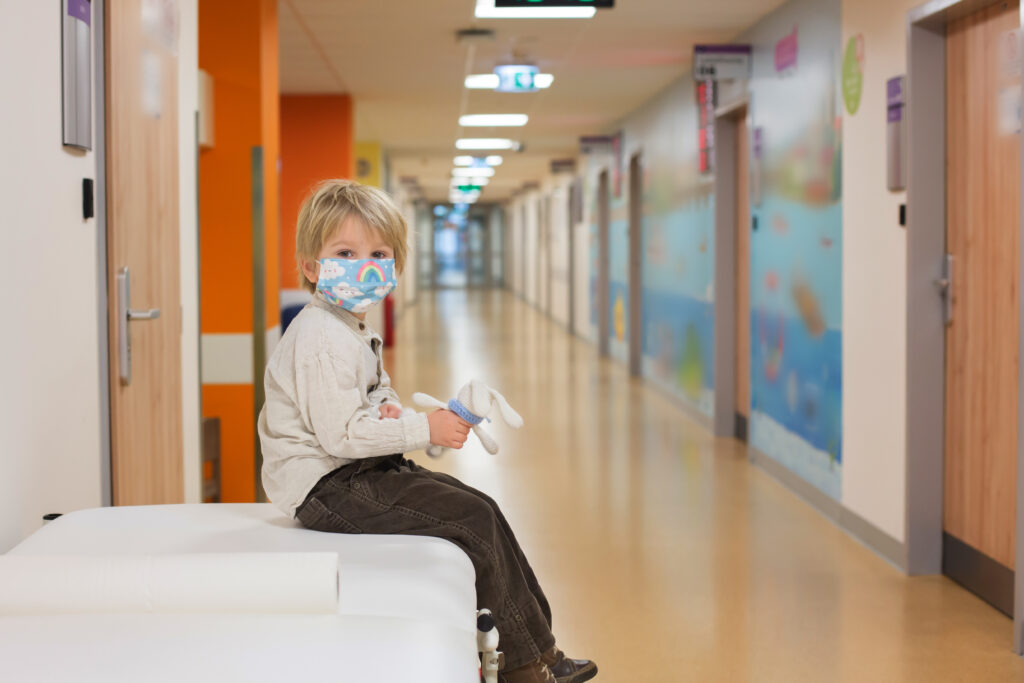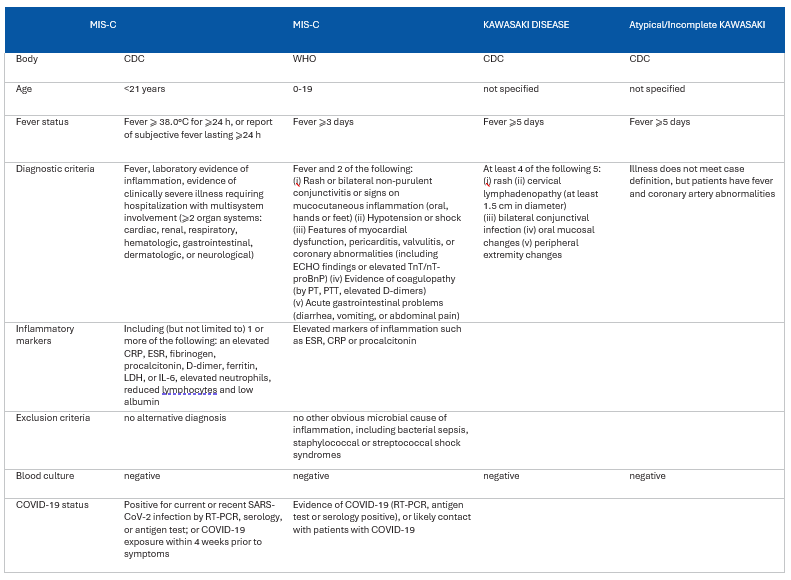By Santa J. Bartholomew M.D. FAAP, FCCM
See Corresponding Case Study: Covid (MIS-C)
Multisystem Inflammatory Syndrome Related to Covid (MIS-C) is a serious health condition in children and adolescents that develops from COVID-19 infection and affects many body systems, including cardiac, renal, respiratory, hematologic, gastrointestinal, and neurologic. In April 2020, the first case of MIS-C was described in a 6-month-old infant with features similar to Kawasaki disease; MIS-C has symptoms closely related to Kawasaki disease and toxic shock syndrome in older children, which are other post-inflammatory syndromes. Children and adolescents made up only a small proportion of people suffering from COVID-19 infections, with 456 million confirmed cases as of March 2022 and 6 million deaths. In the USA, 19% of all cases of COVID were pediatric, and deaths of children were 0.26% of the 900,000 deaths.
In April 2020, cases of post-inflammatory disease associated with COVID-19, much like Kawasaki disease and toxic shock syndrome, began to be reported across Europe, North America, Latin America, and Asia. It was named differently in different parts of the world: PIMS-TS in Europe. MIS-C in the United States, Kawasaki disease shock syndrome by Kanegaye et al. and has a great deal of overlap with Kawasaki disease.

In the USA, 19% of all cases of COVID were pediatric, and deaths of children were 0.26% of the 900,000 deaths.
In April 2020, cases of post-inflammatory disease associated with COVID-19, much like Kawasaki disease and toxic shock syndrome, began to be reported across Europe, North America, Latin America, and Asia. It was named differently in different parts of the world: PIMS-TS in Europe. MIS-C in the United States, Kawasaki disease shock syndrome by Kanegaye et al. and has a great deal of overlap with Kawasaki disease.

Table 1. Definitions and key differences between MIS-C (CDC), MIS-C (WHO), KD and atypical KD. Sources: Jiang et al.,11 CDC,12 Freedman et al.13
Abbreviations: COVID-19, coronavirus disease; CRP, C-reactive protein; ECHO, echocardiography; ESR, erythrocyte sedimentation rate; IL-6, interleukin 6; LDH, lactate dehydrogenase; nT-proBnP, n-terminal pro-B-type natriuretic peptide; PT, prothrombin time; PTT, partial thromboplastin time; RT-PCR, reverse transcription-polymerase chain reaction; SARS-CoV-2, severe acute respiratory syndrome-coronavirus type 2; TnT, troponin T.
Epidemiology:
Initially documented in Europe and North America. Ethnicities were mostly African or Afro-Caribbean as well as Hispanic/Latino descent. More commonly older children 5 to 14 years old with slightly higher male predominance. Typically, there is a gap of up to 4 weeks between acute infection and symptoms of MIS-C. Risk of getting MIS-C seems related to age, viral load and chronic comorbidities. Some data suggests a genetic locus is partly associated with more severe disease.
The most common pre-existing condition is obesity.
Pathophysiology:
The pathogenesis of MIS-C remains completely misunderstood. Post-infectious dysregulation particularly of the innate immune system is thought to be involved since most patient improve with immunomodulatory agents.
Clinical Features: (has some overlap with Kawasaki Disease)
- Respiratory failure
- Shock
- Fever
- Poor ventricular function on ECHO
- Mucocutaneous symptoms
- Gastrointestinal: abdominal pain, vomiting, diarrhea

Laboratory Database:
- Elevated CRP, ESR, D-dimer,ferritin, Procalcitonin and LDH
- Lymphopenia, neutrophilia, thrombocytopenia
- Hypoalbuminemia
- Coagulopathy
- For those with cardiac involvement: elevated troponin, NT-pro-BNP levels indicating myocardial injury.
Treatment:
- Supportive care
- High does IVIG
- Glucocorticoids
- For patients with significant left ventricular dysfunction (ED<35%): Lovenox
- Remdesivir: inhibits the actively replicating virus and most children with MISC are not in the acute phase of illness and the virus is not detectable by PCR, the role of Remdesivir in treating MISC is limited.
Prognosis:
- Mortality rate 1.5%
- Most children recover favorably.
References
The Multifaceted Manifestations of Multisystem Inflammatory Syndrome during the SARS-CoV-2 Pandemic
Gomes,R, et.al. Pathogens 2022, 11(5), 556.
Multisystem Inflammatory Syndrome in Children (MIS‑C)
Julisa M. Patel. Current Allergy and Asthma Reports (2022) 22:53–60
COVID-19 and multisystem inflammatory syndrome in children and adolescents
LiJiang,et.al. The Lancet Vol 20 November 2020
Multi-system inflammatory syndrome in children & adolescents (MIS-C): A systematic review of clinical features and presentation.
Radia,T. et.al. Paediatric Respiratory Reviews 38(2021)51–57
Multisystem Inflammatory Syndrome in Children and Adolescents (MIS-C) under the Setting of COVID-19: A Review of Clinical Presentation, Workup and Management
Ayesha Farooq et al. Infectious Diseases: Research and Treatment Volume 14: 1–12




